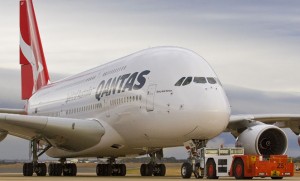
The cockpit voice recorder (CVR) from A380 VH-OQA involved in the QF32 engine failure near Singapore on November 4 has had key parts of the emergency overwritten because the aircraft’s outboard number 1 engine, which supplies power to the CVR, was unable to be shut down immediately after the aircraft made its emergency landing.
The Australian Transport Safety Bureau (ATSB) noted in a November 13 update that, despite being able to recover more than two hours of recordings from VH-OQA’s CVR, “due to the failure of the number 1 engine to shutdown in Singapore, and therefore continuing power supply to the recorder, the audio at the time of the engine failure well over two hours before the No 1 engine could be shut down, was overwritten. That said, elements of the available audio are expected to be of assistance to the investigation.”
The CVR, and flight data recorder (FDR) which captures telemetry from the aircraft’s key systems, were both transported to the ATSB’s offices in Canberra for analysis following the incident.
Meanwhile, the ATSB notes that VH-OQA’s number 2 engine has now been removed from the aircraft, “and is being prepared for transport to a local engineering facility for technical examination under ATSB supervision. The removal of the engine will also facilitate closer examination of the damage to the surrounding wing and other structures and systems.”














